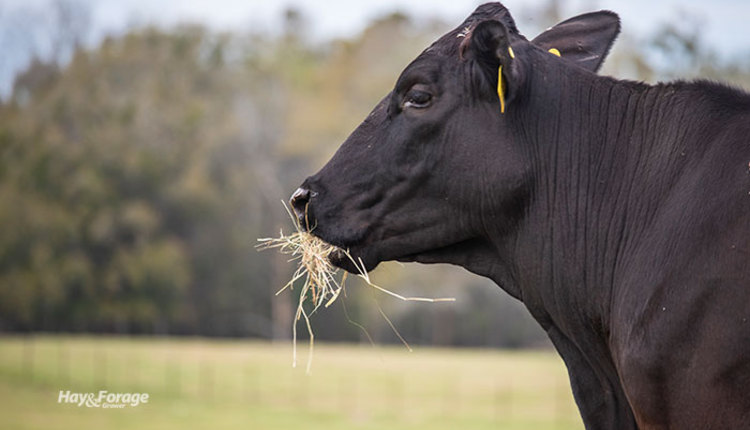
At some point in the coming weeks, many cow-calf producers will shift cows from pasture to feeding stored bales. How much hay (or bales) will be needed hinges on several factors, but one of the most important is simply the quality of the hay.
Knowing forage quality will go a long way in determining what will be needed before pasture growth is adequate to begin grazing next spring.
High-quality forages contain larger concentrations of nutrients and generally make it easier to meet the nutritional needs of the cow. Additionally, cattle can consume more of a high-quality forage since it digests and exits the rumen more rapidly, allowing the cow to refill by eating additional forage.
According to Glenn Selk, an emeritus extension animal scientist with Oklahoma State University, low-quality forages are consumed at a rate of 1.5% of body weight per day on a dry matter basis. High-quality grass hays are consumed at 2% of body weight.
Excellent quality forages, such as good alfalfa or silages, may be consumed on a dry matter basis at a rate of 2.5% of body weight per day. For producers, the combination of improved nutrient content along with better forage intake make high-quality forages extra valuable.
Selk explains that with an understanding of these intake relationships, producers can more accurately estimate the amount of hay needed for winter feeding. For example, a 1,200-pound pregnant spring-calving cow will consume 24 pounds of dry matter per day of a good-quality hay containing about 8% protein. If the hay is 12% moisture, the cow will consume about 27 pounds per day on an as-fed basis.
Another factor to consider is hay wastage. While it can be hard to estimate, it’s not uncommon for waste to account for 10% to 20%. In the previous example, if waste totals 15%, then about 32 pounds of grass hay per day will be needed for each cow. This calculation changes based on cattle weight, so having an accurate knowledge of average cow size in a herd is necessary.
Selk notes that after calving and during early lactation, the cow may weigh 100 pounds less, but she will be able to consume about 2.6% of her body weight of forage dry matter. From the previous example, this translates into 38 pounds of as-fed hay per cow per day.
Know the weight
The diameter and length of a bale, along with its density, type, and moisture content will all greatly influence bale weight. For this reason, it’s important to weigh representative bales from each hay lot to get an accurate estimate of the amount of hay actually being fed.
This hay-feeding season, more than most, is not going to be one where you find yourself short on hay in the spring. Hay is expensive now; it will likely be pricier next February and March.

